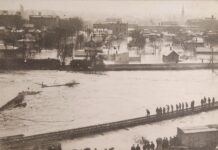Fuel famine in 1919 and unusual tractor use
During a time when most heated with coal and factories relied on steam for power and light, a coal miners' strike inspired interesting uses for tractors.
Avery 5-10 Model B is little, steel-wheeled
Rated at 5-10 HP, the little Avery 5-10 Model B was just 50 inches wide, 54 inches high, 135 inches long and weighed 2,600 pounds.
Dear I.H., ‘we can’t be without our tractor’
In 1919, International Harvester Company published 48 letters from satisfied operators describing how they used their tractors and how reliable they were.
100 years ago, progress meant infrastructure
Sam Moore recaps a 100-year-old letter to the Rural New Yorker, which described the construction of a military road during World War I.
The old oak tree and the hunt for honey
Sam Moore recounts a honey-hunting passage from a book titled The Puddleford Papers, published in 1856.
Readers share memories of ‘red dog’
In Sam Moore's June 6 column, he asked if any Farm and Dairy readers recalled traveling on red dog roads, and to his delight, received several replies.
1881 study looked at elephant’s milk
Sam Moore recalls a story about milk from the Scientific American Supplement No. 288, dated July 9, 1881, On the Composition of Elephants’ Milk.
Reversing roles made this man think twice
Check out Sam Moore's story of a husband and wife swapping roles, and the unexpected outcome.
Red dog covered back roads 60 years ago
Red dog made a good surface material for dirt roads and, as nothing but cast-off waste material, it was fairly cheap.
Steam fueled a revolution, but was risky
One of the prime movers of the revolution was the steam engine and its ability to pull multiple cars of goods and people along tracks across the country.
























